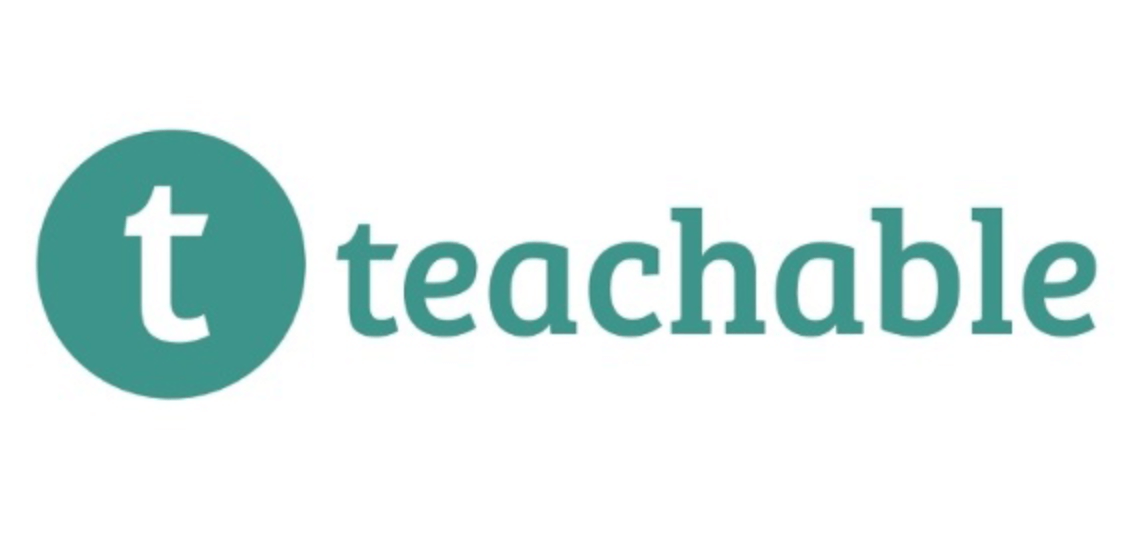Teachable allows instructors to lock several features and content for certain groups of students. This helps ensure that learners have access to relevant materials and exclusive content and that courses are tailored to fit each student’s individual needs.
Providing access to locked content has several benefits for both instructors and learners. For instructors, it grants the opportunity to segment their courses according to the student’s level of engagement and interest, allowing them to customize the experience for each individual and provide the best value for their students. For learners, unlocking courses provides access to exclusive materials and content, grants different levels of access depending on a student’s progress, and keeps the course engaging by giving students the motivation to achieve the next level.

Understanding Course Locking on Teachable
Explaining the concept of locked courses and restricted access
Teachable allows course creators to limit access to specific courses or sections within courses by enabling course locking. This means that once a course is locked, students will only be able to view its content if they have fulfilled the conditions specified by the course creator. This could include requirements such as completing an assigned task or achieving a predetermined score on a quiz. By utilizing this feature, course creators can ensure that their students are engaging with and understanding the content before being allowed access to more advanced material.
Discussing scenarios where course locking may be necessary
Course locking is a useful tool for ensuring that students are progressing through a course at an appropriate pace. It can also be used to motivate students to complete prerequisite tasks, such as reading a course guide or completing a series of formative assessments. Additionally, course locking can be used to provide access to premium content, such as bonus videos or extra practice material, for students who have completed the main components of a course.

> > Click Here to Start Teachable for Free < <
Setting Up Course Locking
Exploring Teachable’s features and options for course locking
Teachable offers a variety of features and settings for locking course content, allowing course creators to control access to specific course sections or modules. With Teachable, I have had the ability to lock modules and lessons for individual students based on their progress, as well as limit the number of times a student can access certain content. These features have enabled me to create customized learning experiences and ensure that my students are completing the course in its entirety.
Step-by-step instructions for implementing course locks
To set up course locks in Teachable, the first step is to access the course settings. From the Teachable dashboard, navigate to the “Courses” tab, and select the course you wish to lock. Next, click on the “Settings” tab, and scroll down to the “Course Locking” section.
Within the “Course Locking” section, you will find the different options for locking course content. Depending on your course structure and goals, you can use the various menu items to decide which content to lock and how to manage access. For example, you can lock modules or lessons using a variety of methods, such as limiting the number of attempts or progress-based unlocking.
Once you have chosen the locking method for each content item, click “Save” to apply the changes to your course. Then, the content will be locked in the manner you have specified. I have found this process to be simple and straightforward, and I have appreciated the flexibility that Teachable offers in its course-locking features.

> > Click Here to Start Teachable for Free < <
Choosing Locking Mechanisms
Differentiating between lock types (e.g., drip content, prerequisites, enrollment codes):
When it comes to locking Teachable courses, it is important to differentiate between the different types of locks available. Drip content lock requires a student to complete the course content in a specified order, with new content unlocking after a certain period of time. Prerequisite lock requires a student to complete one or more courses before they can access another. Finally, an enrollment code lock requires a student to enter a specific code in order to gain access to the course.
Determining the most suitable lock mechanism based on course requirements:
When selecting a lock mechanism for your Teachable course, it is important to consider the specific requirements of your course. For example, if your course has prerequisite knowledge or skills, the prerequisite lock might be the most suitable option. On the other hand, if you wish to release the course content gradually, then the drip content lock may be the best option. Additionally, if you are looking to control who can access the course, an enrollment code lock may be the best choice. By assessing your course requirements and carefully considering the different lock types available, you can choose the most suitable locking mechanism for your Teachable course.

> > Click Here to Start Teachable for Free < <
Enabling Time-Based Locking
Configuring drip content to release course material gradually over time:
Teachable allows educators to configure drip content to release course material gradually over time. By setting up drip content, course creators can control the order in which their students progress through their courses, as the content will be released according to the drip timeline. To configure drip content in Teachable, navigate to the “Drip” tab in the course settings and add the desired release schedule. This ensures that students unlock the content only when they reach the specified dates and times.
Establishing a sequential learning experience with time-based access:
In addition to configuring drip content, course creators can also enable time-based access to create a more structured learning experience for their students. With time-based access, course creators can set a required waiting period between each lesson or module. This feature ensures that students progress through the course in the intended order and helps to keep them engaged and motivated to continue their learning journey. To enable time-based access in Teachable, simply select the “Time-Based Access” option in the course settings and configure the desired timeline.

> > Click Here to Start Teachable for Free < <
Implementing Prerequisite Locking
Requiring learners to complete specific courses or modules before accessing others
As an experienced user of Teachable, I have had success using prerequisite locking to facilitate a structured learning experience for my students. Prerequisite locking allows course creators to require learners to complete specific courses or modules before they are able to access others, creating a sequential learning path. For example, in my experience, I have used prerequisite locking to ensure students complete certain courses before moving on to more advanced ones. This strategy ensures that students are well-equipped with the necessary knowledge to tackle more challenging topics and avoid frustration when trying to progress.
Creating a structured learning path with prerequisite requirements
When implementing prerequisite locking, it is important to create a structured learning path. This means setting up the prerequisite requirements such that students are presented with the right course or module at the right time. This requires a good understanding of the target audience and their needs, as well as the objectives for each course. My experience with Teachable has taught me to take the time to carefully plan out the learning path for each student, ensuring that each course builds on the knowledge from the previous ones. By doing this, I have been able to create a sequence of courses that helps students progress as quickly and efficiently as possible.

> > Click Here to Start Teachable for Free < <
Using Enrollment Codes for Locking
Generating and distributing unique enrollment codes for restricted course access
As a Teachable user, I have had success with using enrollment codes to lock courses. Through the Teachable platform, I can generate unique enrollment codes to register for a restricted course anytime I need. To generate the codes, I access the course settings in my Teachable dashboard and click on the “Enrollment Codes” tab. I can then generate a number of codes and specify how many times each code can be used. After that, I can access the codes from my “Manage Access” page and copy them for distribution.
Offering exclusive access to selected learners or specific groups
Enrollment codes are an effective way to offer exclusive access to selected learners or specific groups. After I have generated codes, I can distribute them to only those learners who are qualified and approved to access the course. Additionally, I can assign the same codes to multiple learners, allowing specific groups of people to access the course at once. I have also found it helpful to set an expiration date for the codes, adding an extra layer of security to my courses.

> > Click Here to Start Teachable for Free < <
Unlocking Courses for Individual Learners
Granting manual access to locked courses for individual learners
As an experienced user of Teachable, I have found that the platform makes it easy to unlock courses on an individual level. The process is simple and straightforward once you know the steps to follow.
Providing step-by-step instructions for unlocking courses on an individual basis
To unlock a course for an individual learner, first log in to your Teachable admin dashboard. Then, on the left-hand menu, click on the “Users” tab. From the Users page, search for the user who needs access to the course, and click on their name. Next, click on the “Courses” tab, and toggle the course to “On” for the user. Finally, click on the “Save” button at the top right-hand corner of the page. This will unlock the course for the user, and they will now be able to access and complete the course.

> > Click Here to Start Teachable for Free < <
Communicating Course Unlocking to Learners
Informing learners about the course-unlocking process and criteria
As an instructor on Teachable, it is important to provide learners with clear information about the unlocking process and criteria for each course. This allows them to understand why and how they will need to complete specific activities in order to unlock content in the course.
To communicate this information, I typically provide an overview of the unlocking process and criteria in the course description. This allows me to outline the steps learners need to take in order to unlock specific course content, as well as the techniques they will need to master in order to progress. Additionally, I provide links to relevant resources and external websites to help learners gain a more in-depth understanding of the unlocking criteria.
Communicating instructions and prerequisites for unlocking locked content
When learners have a clear understanding of how to unlock content in a course, it is important for me to provide detailed instructions on how to complete the unlocking process. To do this, I typically provide a separate instructions page for each course. This page outlines the exact steps learners need to take in order to unlock content, as well as any prerequisites they may need to meet before attempting to unlock content. This information helps learners to narrow down the unlocking process and focus their efforts on mastering specific concepts and activities.
By clearly communicating the unlocking process and criteria to learners, I can ensure that they understand the content they will need to master in order to progress in the course. Additionally, providing direct instructions and links to relevant resources helps to make the unlocking process as simple and straightforward as possible.

> > Click Here to Start Teachable for Free < <
Troubleshooting Unlocking Issues
Addressing common challenges learners may encounter during the unlocking process.
When it comes to unlocking Teachable courses, learners may experience a variety of issues that can prevent them from accessing their chosen course. Common challenges can range from technical issues with the platform, to misplacing login credentials, to payment-related problems. As an experienced user of Teachable, I have encountered these issues myself and have developed troubleshooting steps to help learners get back on track with their learning journey.
Providing support resources or troubleshooting steps for resolving issues
First, it’s important to check for any technical issues that may be affecting the learner’s ability to unlock the course. Teachable offers several support resources, including helpful articles and videos in their support center, that can provide guidance on technical issues and how to troubleshoot them. Additionally, learners can reach out to the Teachable support team directly for assistance.
If the issue is not technical in nature, learners should check their email for any communication from Teachable, which could provide helpful information on how to unlock the course. For example, if the payment for the course was declined, they may receive an email with instructions on how to update their payment information. For instances when users forget their password or login credentials, Teachable allows them to reset their password easily on the login page.
In some cases, learners may need additional assistance with unlocking a course; in this case, they can reach out to the course instructor directly for help. Depending on the instructor’s policy, they may be willing to provide additional support or a workaround for unlocking the course.
Overall, while learners may encounter difficulties when unlocking a Teachable course, the platform offers a range of support resources and troubleshooting steps to help get them back on track.

> > Click Here to Start Teachable for Free < <
Conclusion
In this article, I have provided a detailed overview of the methods for unlocking courses on Teachable. Specifically, I discussed the use of course codes to unlock courses, the ability to manually unlock courses, setting up drip content to unlock course sections, and the option to unlock courses for specific user groups. I also provided information on how to access locked content via the learner dashboard.
In conclusion, I encourage course creators to explore the course-locking features available in Teachable. These features can be used to optimize the learning experience for your students and can help you to engage them in your content. Utilizing these features will enable you to deliver your content in an organized, effective manner while also providing your students with the structure and support needed to learn.
